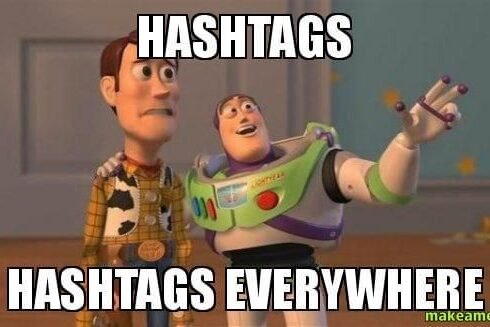Unlocking the Art of #Hashtags: A Comprehensive Guide
The Art of #Hashtags:
Yes, there is an art to hashtags, and Twitter owes much of its identity to them.
While hashtags are widely used on Twitter and Instagram, their use on Facebook is still debatable.
On Instagram, they’re practically a requirement.
In fact, posts with hashtags on Instagram receive on average 12.6% more engagement than those without, which explains their popularity.
But on Facebook?
Hashtags are more than just the “pound sign” of the past.
Hashtags serve as organizing tools that allow users to find content related to a specific topic or theme.
They are a powerful tool to organize and express ideas on social media platforms.
By adding hashtags to your post, you increase the chances of it being seen by a wider audience interested in the same topic.
Twitter pioneered the use of hashtags, and Instagram made them a staple of every post, with a limit of 30.
However, unlike Twitter and Instagram, Facebook users tend to shy away from using hashtags, and posts with hashtags may actually perform worse than those without.
But on Facebook, you are at the wrong party.
For marketers, hashtags can help to create brand awareness and attract customers.
.
Careful consideration should be given before deciding to add hashtags to your Facebook post, and testing their effectiveness through analytics is recommended.
Why did Twitter change their name to X?
A hashtag, shown as the “pound sign” followed by text and/or numbers without spaces or punctuation, is a powerful tool.
Hashtags increase post visibility and reach
It groups social media posts with similar topics.
They make it easier to find and join conversations
You can use both uppercase and lowercase letters for clarity.
Hashtags can be included in the middle or end of posts
Typing the pound sign followed by text activates hashtags.
Including hashtags increases the chances of new followers finding your content
Some platforms, like X and Instagram, offer suggestions as you type.
How to Use Hashtags:
Hashtags sort posts by events, locations, or personal interests, creating clickable search links.
Use hashtags to categorize posts by topic or event
Local businesses can enhance visibility using location-specific, business-related, and descriptive hashtags.
Location-specific and custom hashtags increase visibility for local businesses
Some businesses craft custom hashtags for specific marketing campaigns.
Now, let’s explore the do’s and don’ts of effective hashtag usage:
Do's:
Use hashtags on Instagram and X:
Twitter birthed the hashtag, and Instagram relies on it for organization and search.
Choose the appropriate hashtags for each platform
Use hashtags on these platforms for optimal reach.
Create a branded hashtag for your business:
Perform a search for #YourBusinessName to ensure uniqueness.
Make sure your branded hashtag is unique and memorable
Add identifiers like city names or popular monikers to distinguish your branded hashtag.
Include identifying information to distinguish your branded hashtag from others
Incorporate it into every post to enhance discoverability.
Research hashtags specific to your niche:
Explore related hashtags through platform suggestions or by analyzing engaging posts.
Research hashtags carefully to make sure they are relevant and effective
This not only refines your content but can also boost your follower count.
Use a mix of branded, popular, and niche hashtags:
Combine 2-4 niche hashtags, 5 -7 mid-range hashtags, and 2 – 4 popular hashtags for a well-rounded strategy..
Using a variety of hashtag types helps to broaden your audience
Always include your branded and local hashtags.
Experiment with different hashtag combinations to find the optimal mix for your content

Don'ts:
Don’t use too many hashtags:
Quality trumps quantity.
One to three hashtags per post is ideal for most platforms.
Avoid excessive hashtagging as it could be perceived as spam.
Use hashtags that are relevant to your post and your brand.
Consider placing hashtags at the end of your post or in the first comment.
Don’t use hashtags that claim to increase followers:
Steer clear of tags like #likeforlike or #followforfollow.
Instead, focus on using hashtags that are related to your niche.
Quality followers outweigh quantity.
Don’t cross-post status updates with the same hashtags:
Tailor your updates and hashtags for each platform; X loves hashtags, Instagram loves hashtags, Facebook not a hashtag party
Don’t use Snapchat for hashtags:
Snapchat doesn’t support hashtags, so refrain from using them, except perhaps for a touch of humor in captions.
Hashtags are a powerful tool to widen your reach, but it’s crucial to grasp the details for success.
Hashtags vary in popularity on different platforms, so do your research.
By applying these tips to your social media strategy, you’ll become adept at using hashtags effectively.
Happy hashtagging!
If you need more help with your social media marketing, feel free to reach out for a free consultation.
#MyDigitalPresence
#SocialMediaMarketing
#HashtagStrategy
#DigitalMarketing
#BusinessTips
#The Art of #Hashtags
Always be kind,
#ThePragmaticTechie
By Frank Joseph Rodgers



















